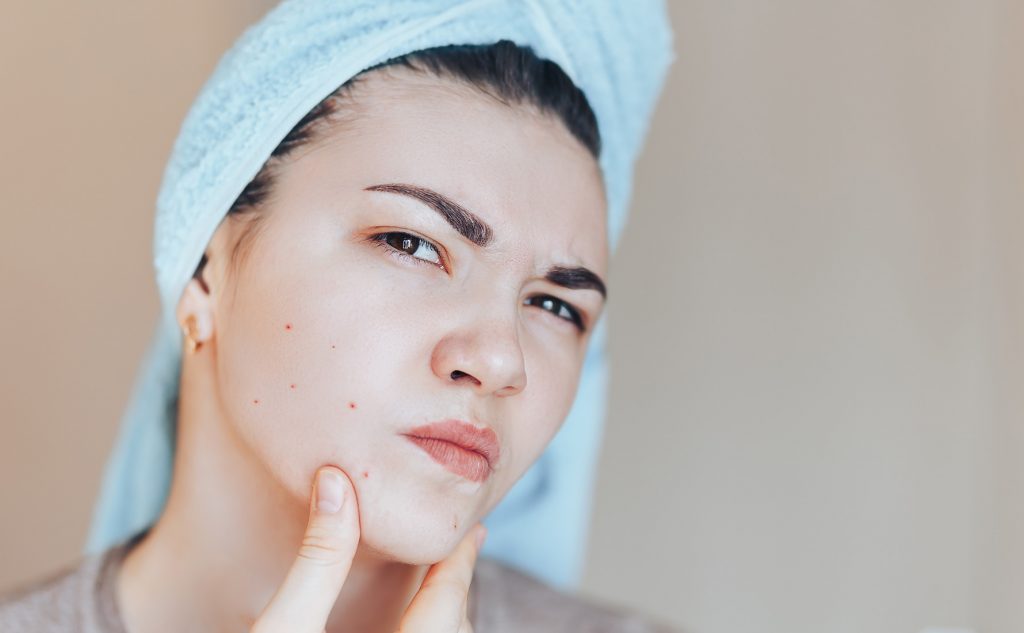
Bodybuilding and Acne: Causes & Treatment after Steroids
Bodybuilders striving to improve their fitness are plagued by many troubles. Some do not improve athletic performance, others do not have the best effect on overall well-being and health. And the third are a cosmetic hindrance, more interfering and distracting from achieving goals than causing serious damage.
It is to this category that acne belongs, which can appear on the face and body, both in athletes using anabolic steroids (not only), and in people far from the world of sports. Today we will try to understand the essence of this problem, find out why acne occurs in athletes in bodybuilding and other disciplines popular today, and how you can effectively, quickly, and most importantly get rid of it without unnecessary expenses.
What is Acne?
To begin with, in order to bring you up to date, as well as to “dig” a little in theory – we will find out what it is in general and how it manifests itself.
So, acne is a common skin disease, more precisely, an inflammation of the sebaceous glands, characterized by a number of pronounced signs and symptoms. Among them: increased oily skin (seborrhea), blackheads (so-called comedones), red abscesses (pustules) and even scars that usually occur as a consequence.
Acne appears, as a rule, on those areas of the body where there are many sebaceous glands – primarily on the face, back and chest. The disease in some cases has an unpleasant inflammatory character, in most situations this characteristic is absent, although here everything depends on the manifested form. By the way, athletes, in fact, like young guys going through puberty, are usually worried about non-inflammatory rashes, which can be easily eliminated by observing hygiene and using available and mostly inexpensive external agents (not only).
Note that bodybuilding acne rash is a common occurrence. And there are good reasons for that. The first is high-calorie and high-carbohydrate diets, which are regularly practiced by athletes, but at the same time are capable of provoking a sharp onset of the described disease. The second is the long-term use of strong anabolic steroids, for example, testosterone esters (Testosterone Enanthate, Testosterone Propionate, Sustanon, and some others).
However, we will talk about the reasons in detail later, but for now let’s better discuss the symptoms and signs accompanying acne in bodybuilding. More precisely, let’s discuss the forms of this deviation and find out what features are characteristic of them and how they are dangerous.
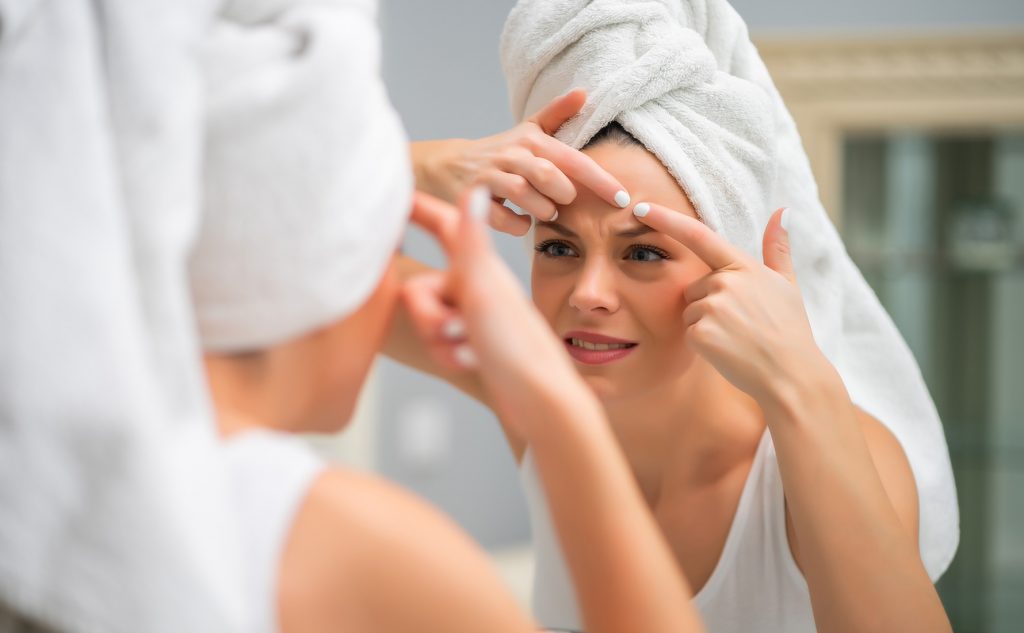
Types of Acne
In modern medical science the described disease is usually divided into several types. In particular, non-inflammatory and inflammatory forms of acne are distinguished, characterized by their unique features.
Let us explain: non-inflammatory forms are white (closed) dots, comedones, black (open) comedones, acne, and milia. In turn, inflammatory forms are superficial and deep acne, extremely unsightly in appearance. Important: most patients have a non-inflammatory type of disease, in particular superficial abscesses.
Acne pimples known as vulgar or youthful acne are common. They occur in approximately 80% of individuals between the ages of 15 and 24. This type of disease develops in adolescence and is characterized by the appearance of non-inflammatory acne (comedones) on the face, less often on the chest and back of the patient. These comedones are small, usually about 5 millimeters in diameter, in the form of bright red tubercles, in some cases with a pronounced abscess on the surface. When they collapse, they leave behind pigmentation, rarely – small superficial scars, which are quite difficult to get rid of.
Note: when a youthful acne or vulgar disease makes itself felt, the skin acquires a characteristic oily sheen, the hair is also oily, slight hair loss is possible, and the separation of fat is increased, which is not surprising.
The most common form of the disease with severe inflammation is acne conglobata, acne, large rashes, which can subsequently be reflected in quite serious problems. They are characterized by the appearance on the chest, back and face of noticeable nodes located deep in the skin, in some cases, capturing the upper sections of the subcutaneous fat. It is known that such acne in diameter can reach 1-2 centimeters, it is also extremely painful. Even worse, when merging, the nodes can form conglomerates, sometimes abscesses, which, after opening, leave ulcers (long-term, poorly healing) and even scars with fistulous passages and bridges.
In general, if the forms in which an acne rash can appear is a more or less a simple concept (there are inflammatory, rare, severe and threatening consequences, and there are non-inflammatory, frequent, mostly not causing serious harm), then the degrees are a little more complicated. Therefore, let’s sort it out in order.
Severity of Acne
To begin with, how are the degrees of the described deviation estimated? Previously, there were various classifications of the severity of this ailment, but all of them were eventually reduced to a single generally accepted division, according to which the disease is determined by pronounced degrees from 1 to 4. Accordingly, mild (1), moderate (2), severe (3) and very severe (4) acne, each with its own unique symptoms. Note that to determine the degree, doctors use indicators such as:
- The number of rashes on the face and on the body in general;
- The location of blackheads on the body;
- The presence or absence of certain elements of the rash.
Also of considerable importance in determining the degree of acne are the types of rashes formed. As we have already found out, the described disease is different and what kind of rash is formed is taken into account when making a diagnosis and prescribing treatment:
- Closed and open comedones – slightly inflamed pores clogged with sebum;
- Pustules – often accompanied by redness of the skin;
- Papules – usually painless, inflamed nodules of blue-red or pinkish color with a diameter of no more than 5 millimeters;
- Nodules – large and painful acne lesions over 5 millimeters in diameter.
Now to the point. Mild (1) acne is defined if the skin almost always has about 10 small pimples, papules or comedones. Pustules and / or nodes are not formed with it. At the same time, single pimples that occasionally appear on the body are not considered a disease. They could well have been provoked by bacteria or a minor hormonal disruption. The appearance of comedones increases the chances of developing the disease and the need for treatment, since they can become inflamed and form papules.
The 2nd (medium) severity of acne is determined in cases where 10 to 25 comedones and / or papules are found on the skin, and there may be single pustules. As a rule, nodes are not formed at this stage. In general, the average degree, in contrast to the mild stage of the disease, already requires a certain treatment using special external means. Hygiene alone is not enough here.
Note that acne severity levels one through two are classified as easily treatable. In most cases, to eliminate them, it is enough to simply observe hygiene and take one or more drugs and / or external agents that quickly and effectively deal with formations and rashes on the face and body.
Let’s get back to the topic: grade 3 acne, also known as severe acne, is diagnosed when 26 to 50 comedogenic pimples are found on the patient’s body, as well as 21-30 papules and pustules, and about 5 nodes. At this stage, any type of acne can form, which makes the patient’s skin extremely unsightly (large areas are red and inflamed). Areas with knots are extremely painful and can leave scars.
A very severe (4th) degree of acne is diagnosed as final, in which there are more than 50 comedones on the skin, at least 30 pustules and papules, as well as 5 or more nodes. In this case, the patient’s condition is characterized not only by aesthetic discomfort, but also by tangible pain sensations – the skin is inflamed, acne breaks out and hurts. Inflammations at this stage can merge and form large abscesses, and then deep scars.
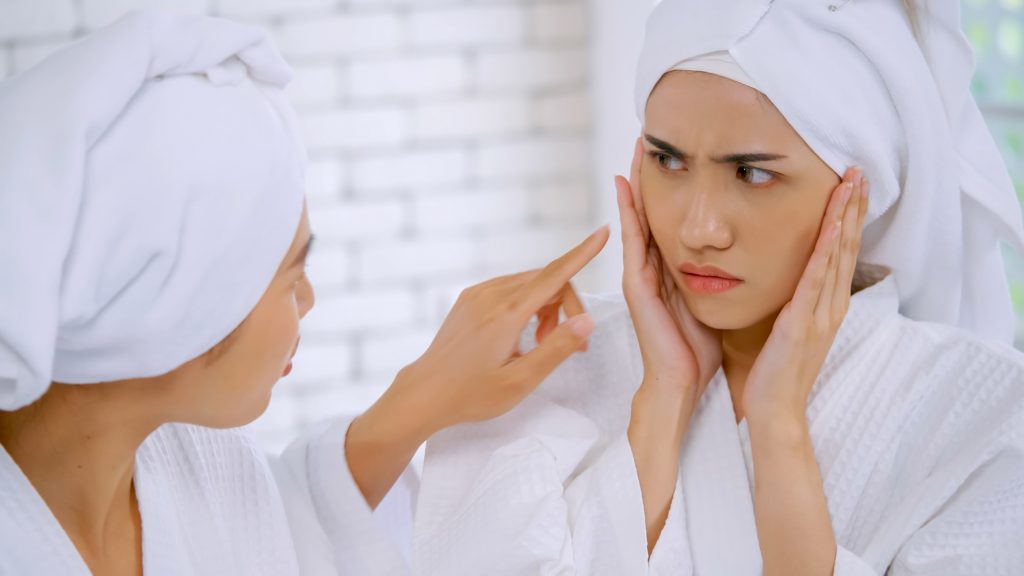
What Causes Acne?
Now let’s talk about the causes of the described ailment (diseases, pathologies, general conditions) that can lead to its occurrence and development.
The causes of acne on the face, back, chest and other areas of the body can actually be very different. In other words, if an athlete has acne, then this does not mean that it is the anabolic steroids or the wrong diet that is to blame. On the other hand, in most situations, steroids in bodybuilding are the culprit for acne, especially if strong androgenic steroid drugs have been used for a long time.
In general, in modern medicine, it is customary to distinguish such causes of acne as:
- Hereditary factors;
- Hormonal activity associated with menstruation, hormonal disruptions, etc.;
- Diseases of the gastrointestinal tract (GIT);
- Subcutaneous tick (demodicosis);
- The cause of acne rash can be a transitional age;
- Stressful situations that activate the adrenal glands;
- A large accumulation of dead skin cells;
- Various skin lesions accompanied by inflammation;
- Increased activity of the sebaceous glands;
- Often the causes of acne are microorganisms;
- Exposure to high doses of chlorine;
- The use of products containing lithium, barbiturates or halogens;
- Of course, the use of drugs of the category of anabolic steroids, and others.
Important: initially, the hormonal causes of acne, namely hormonal disorders, were considered the main culprits of the described ailment. As a consequence, it turned out that there are many more reasons and a variety of factors can lead to the manifestation of the disease – from microorganisms and ticks to stressful situations and infections.
It was also found that the main hormones that act as a cause of acne and provoke disease are testosterone, dehydroepiandrosterone, dihydrotestosterone, and IGF-1. It is their increased content in the body that can lead to the appearance of acne. This is especially true for bodybuilders who use anabolic steroids on long cycles.
Note that apart from athletes using anabolic steroids, the described deviation in the post-pubertal period is quite rare. However, it does occur. Moreover, it can be caused, again, by a variety of factors. In particular, there may be causes of acne such as Cushing’s syndrome or polycystic ovary syndrome. In menopause, rashes can occur due to a lack of the hormone estradiol. Foods that are high in carbohydrates can also be the cause, as excess carbohydrates provoke an increase in the synthesis of fatty acids, including fatty acids that form the basis of sebum. And one more thing: almost all acne patients from stages 1 to 4 have low levels of vitamins A and E in the body.
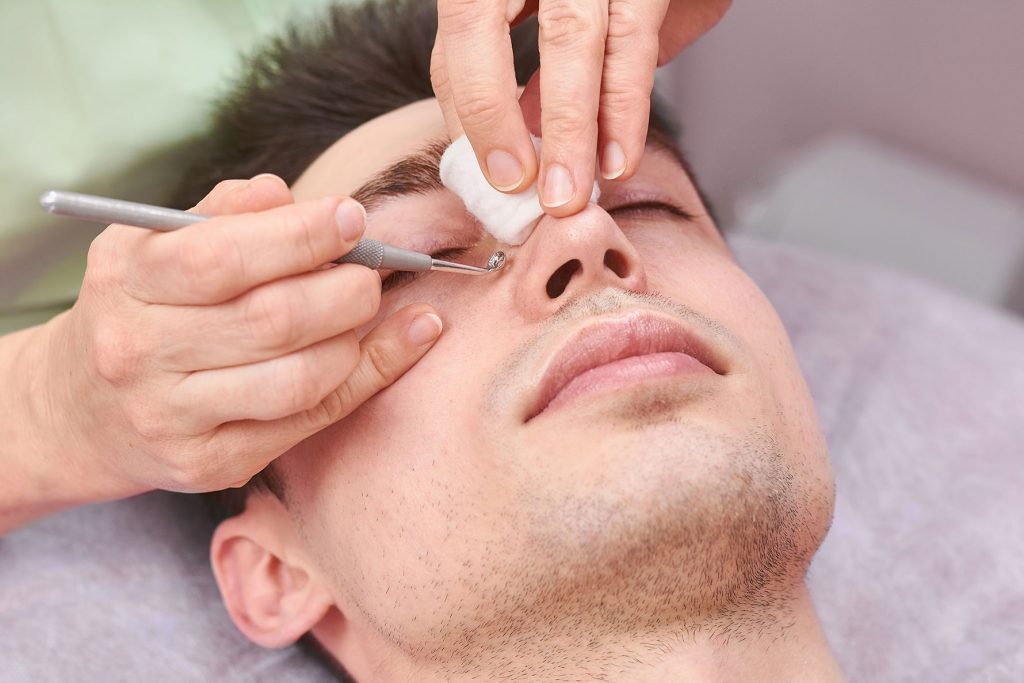
How to Treat Acne?
We must say right away that for the treatment of this disease, a variety of methods are used, the choice of which is based on the condition of the particular patient. Rational treatment of acne is primarily determined by disease-causing factors, including the formation of sebum, proliferation of propionibacterium and other aspects that support the inflammatory process and generally affect the course of the disease.
When acne treatment is prescribed, the prevalence of the process is taken into account, how advanced the disease is, its duration, severity, as well as the formation of sebum and the type of skin lesion. The assessment of social status, psycho-emotional sphere and social adaptation of the individual is also of great importance here. In turn, nutritional factors are usually not taken into account when choosing a therapy, although there are exceptions.
Treatment regimen for acne in a non-inflammatory form, recommended preventive measures:
- Reducing the amount of consumed carbohydrates. Exclusion of simple carbohydrates from the diet;
- Prevention of acne prior to treatment should be based on regular water treatments using soap. You should always take a bath (shower), for example after exercising;
- Take vitamin and mineral preparations (complexes), in particular those containing vitamins B, A and E.
Methods for treating acne rash in a non-inflammatory form, therapeutic measures:
- To cleanse the skin, use special strips that mechanically effectively remove the rash (available at the pharmacy);
- Wipe the damaged areas of the skin with salicylic alcohol (cleanses the skin, destroys bacteria and has other beneficial effects);
- When treating acne disease, if necessary, replace salicylic alcohol with Differin or an analog (gel for external use);
- Before using the above agent or its analogs (Differin, Accutane and others), consult your doctor (they have some contraindications and side effects that may be critical in your case).
Treatment of inflammatory acne disease, recommended preventive measures:
- Cancellation of anabolic steroids, or at least a switch to steroids with a low index of androgenic activity;
- Reducing the amount of consumed carbohydrates. It is recommended to exclude simple carbohydrates, fatty and fried foods, as well as spicy foods from the diet. At the same time, try to eat more food rich in fiber;
- Prevention of inflammatory acne, as well as non-inflammatory, requires regular water procedures using soap (soap with a pH of 5.5, i.e. liquid or baby soap). It is not recommended to use ordinary alkaline soap with a pH of 7-9, as it can aggravate the situation and provoke the development of the disease;
- Start taking vitamin and mineral supplements, if not already. Especially those that contain vitamins A and E, as well as B vitamins.
How to treat inflammatory acne, remedial measures:
- The practice of visiting a solarium can help. In some cases, ultraviolet baths help to eliminate the rash due to the formation of local skin resistance;
- Rubbing the problem areas of the skin with salicylic alcohol (1-2 times a day). You can buy this remedy at almost any pharmacy;
- If the effectiveness is low, salicylic alcohol should be replaced with Skinoren (this is a cream based on Azelaic acid);
- When acne treatment is underway, Zineryt (contains Erythromycin and Zinc acetate to kill bacteria) can be added to improve its effectiveness. Or resort to the help of the drug Basiron (a means that suppresses the secretion of sebum and at the same time destroys bacteria);
- Despite the measures taken, if the skin remains oily, start using Accutane (this can be bought online via multiple bodybuilding sites i.e. hulkroids.net), which suppresses the activity of the sebaceous glands (shows excellent results even with a steroid cycle);
- If the cycle of acne treatment is still ineffective (new inflamed skin areas, acne and other rashes appear), antibiotics should be taken. In particular, Doxycycline, taken by mouth, is the best choice here (an antibiotic treatment cycle lasts an average of 10 days);
- In advanced, severe cases, it may be necessary to carry out blood purification (plasmapheresis), laser or other removal of acne on the skin.
Important: before starting medical procedures and taking the marked drugs, you should consult a doctor to make sure that they are safe and appropriate for their use (there may be contraindications and side effects that are critical for you).
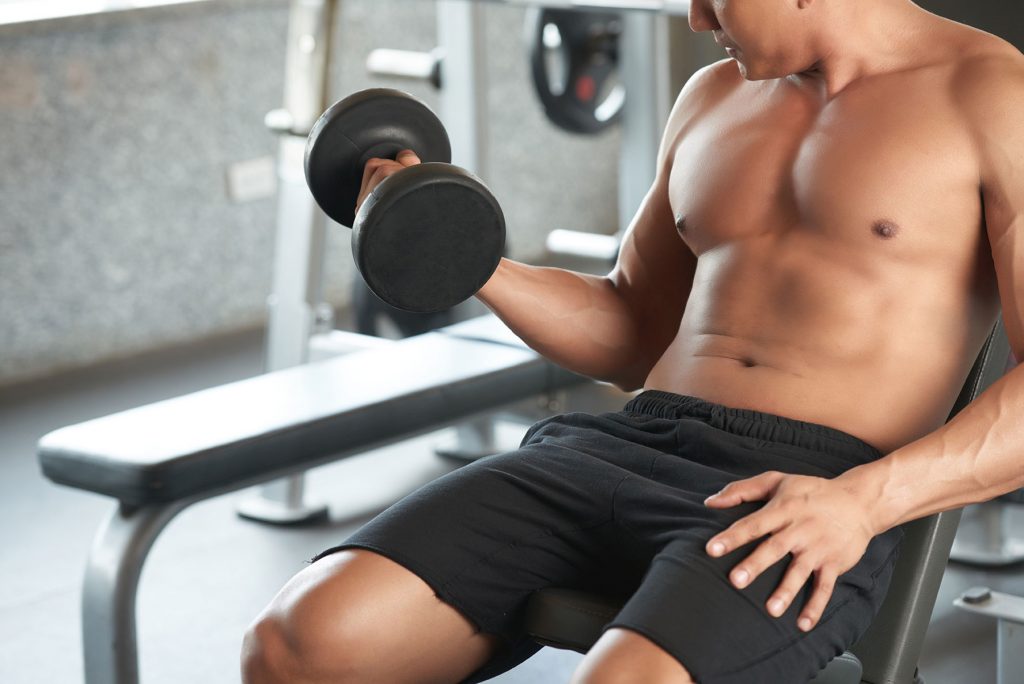
The 5 Best Acne Medications
Medications that are effective in treating comedones. Non-inflammatory comedones are a common type of the described ailment, which occurs mainly in the early stages. Their treatment is based mainly on taking timely preventive measures. However, it may also include the use of certain topical agents that reduce acne and stop the progression of the disease.
Remedies for acne, if comedones have made themselves visible, are salicylic acid preparations, preparations containing sulfur, retinol palmitate, azelaic acid, isotretinoin, tretinoin, adapalene and some other commonly available drugs.
1. Tretinoin
Tretinoin is a drug that reduces the formation of blackheads, particularly comedones. As a remedy for acne, it is used in various forms and concentrations – these are gels (0.01% and 0.025%) and topical creams (0.1%, 0.025%, 0.05%). With good tolerance, the drug is used once a day (applied to the affected skin).
2. Azelaic acid
Azelaic acid, in turn, is applied in the form of a 20% cream. This drug for acne is applied to problem areas 2 times a day. Note that both azelaic acid and Tretinoin are usually used for several months. The treatment cycle ends when a pronounced remission of the disease is achieved.
Effective remedies for mild inflammatory acne. In a mild form with a relatively small number of rashes, it is advisable to use external alcohol solutions containing salicylic acid. Some antibiotics, antibiotic ointments, Benzoyl peroxide, and resorcinol are also effective.
3. Benzoyl peroxide
Benzoyl peroxide as an anti-acne drug is used in the form of a gel or a solution of 1-10%, applied once a day to the damaged areas for 2-3 full weeks. In this case, the most rational is the use of a 3% solution of the specified agent in combination with a 3% erythromycin, or a 7% glycolic acid solution.
4. Retinoic ointment
In turn, Retinoic ointment as a remedy for the treatment of acne is also applied to the affected areas (it is effective for pinkish acne, oral dermatitis, papulopustular acne, nodular and cystic forms of acne). Please note that the various derivatives of Retinol and Tretinoin should never be used together with exfoliating agents, and in case of increased sun exposure, in combination with ultraviolet radiation (complications may occur).
5. Isotretinoin
Preparations for acne in a severe inflammatory form (multiple acne, nodules and other rashes). For the treatment of severe forms of the disease, a combination treatment method is used, based on external and systemic therapy. The exception, which we will now talk about, is perhaps the drug Isotretinoin (Accutane), which is used as monotherapy.
So, Isotretinoin is in fact the only drug that can affect all factors of the disease. As an effective acne treatment, it can reduce both sebum and acne production and inhibit bacterial growth. However, when using it, certain complications are possible, in particular photophobia, conjunctivitis, dystrophy of nail platinum, partial loss of hair on the head, dry skin and some others. Therefore, taking this drug must be taken as seriously as possible (you should consult your doctor before using it).
If we talk about the application, then the remedy for acne on the face and other parts of the body Isotretinoin is usually used in a dose of 1 mg per 1 kg of body weight, not exceeding the range of 60-80 mg per day during the first month of treatment. As a consequence, it is possible to adjust the dose of 0.5 mg up to maintenance / therapeutic volumes within a period of up to 6 months (control of liver function tests is mandatory when taking it, it is carried out 1 time in 4 weeks).
How To Buy These Medications?
There are about 50 million Americans who suffer with acne, and clearing it up can be expensive. Patients who received medical treatment for acne spent more than $1.2 billion in total on treatments and related costs in 2013.
How do you avoid paying through the roof for these treatments?
First try over-the-counter treatments before opting for prescription medication, especially if you have a mild to moderate form of acne. Over-the-counter products containing benzoyl peroxide, salicylic acid, or retinol will be much lower in cost than the prescription medication.
Secondly, choose generic versions instead of brand names. Generics containing the same active ingredient as the branded drugs will be much cheaper with the same effect.
Online sports pharmacology retailers for bodybuilding, such as hulkroids.net and pumpers.co, specialize in over-the-counter, prescription free, generic drugs for the specific treatment of bodybuilding acne.